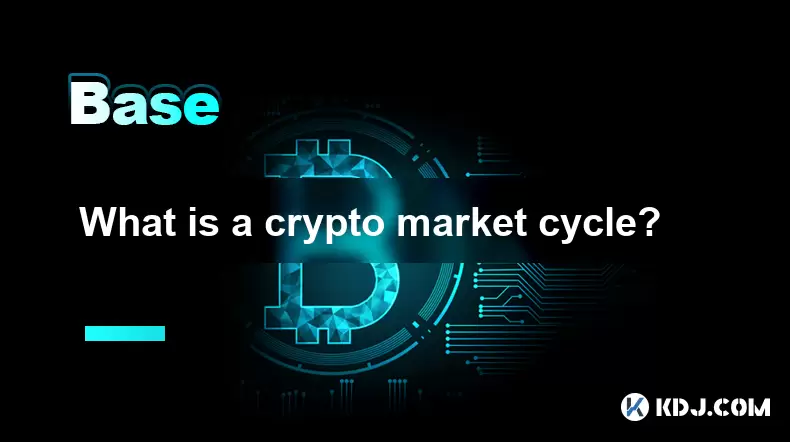-
 Bitcoin
Bitcoin $118800
1.58% -
 Ethereum
Ethereum $3746
0.77% -
 XRP
XRP $3.504
0.58% -
 Tether USDt
Tether USDt $1.000
0.01% -
 BNB
BNB $795.9
5.17% -
 Solana
Solana $202.3
1.89% -
 USDC
USDC $0.0000
0.02% -
 Dogecoin
Dogecoin $0.2660
0.42% -
 Cardano
Cardano $0.8851
0.64% -
 TRON
TRON $0.3168
2.24% -
 Hyperliquid
Hyperliquid $45.60
3.36% -
 Stellar
Stellar $0.4696
2.37% -
 Sui
Sui $3.964
0.86% -
 Chainlink
Chainlink $19.55
0.72% -
 Hedera
Hedera $0.2711
1.51% -
 Avalanche
Avalanche $25.71
0.02% -
 Bitcoin Cash
Bitcoin Cash $526.7
1.89% -
 Litecoin
Litecoin $120.5
4.40% -
 Shiba Inu
Shiba Inu $0.00001524
0.31% -
 UNUS SED LEO
UNUS SED LEO $8.994
0.01% -
 Toncoin
Toncoin $3.290
0.71% -
 Polkadot
Polkadot $4.498
2.49% -
 Uniswap
Uniswap $10.74
1.57% -
 Ethena USDe
Ethena USDe $1.001
0.01% -
 Monero
Monero $324.0
2.53% -
 Pepe
Pepe $0.00001410
0.25% -
 Bitget Token
Bitget Token $4.825
-0.16% -
 Dai
Dai $0.9999
0.01% -
 Aave
Aave $307.9
-2.13% -
 Bittensor
Bittensor $447.8
1.32%
What is a crypto market cycle?
The crypto market cycle features four phases—accumulation, markup, distribution, and markdown—shaped by investor behavior, sentiment, and macroeconomic factors.
Jul 23, 2025 at 04:29 am

Understanding the Basics of a Crypto Market Cycle
A crypto market cycle refers to the recurring pattern of price movements that cryptocurrencies experience over time. These cycles typically consist of four distinct phases: accumulation, markup, distribution, and markdown. Unlike traditional financial markets, the crypto market operates 24/7 and is highly influenced by sentiment, speculation, and macroeconomic factors. Understanding these cycles is crucial for investors and traders who aim to optimize their entry and exit points in the market.
Accumulation Phase — This is when early investors or institutional players begin buying assets quietly. Prices are generally low, and trading volume remains subdued. Public interest is minimal, and the market sentiment is mostly negative.
Characteristics of the Markup Phase
The markup phase is marked by a noticeable increase in price and trading volume. As more investors become aware of the asset, demand starts to rise. This phase is often fueled by positive news, increased media coverage, and growing adoption of the technology behind the cryptocurrency.
Increased Public Interest — During this phase, social media buzz, influencer endorsements, and rising trading volumes become evident. Retail investors start to enter the market, contributing to further price appreciation.
Technical Indicators — Traders often use tools like moving averages and Relative Strength Index (RSI) to identify entry points. These indicators help in recognizing trends and potential reversals.
The Distribution Phase and Its Significance
As the market reaches a peak, it transitions into the distribution phase. Here, early investors and smart money start to sell their holdings to realize profits. Although prices may still appear strong, the momentum begins to wane.
Volume Analysis — During this stage, trading volumes may remain high, but price movements become erratic. This divergence between price and volume often signals the end of the bullish trend.
- Large sell orders appear on exchanges without significant price drops, indicating smart money exiting positions
- News sentiment starts to shift from overly positive to neutral or mixed
- Technical indicators like the Moving Average Convergence Divergence (MACD) show signs of bearish divergence
Entering the Markdown Phase
Once the distribution phase concludes, the market enters the markdown phase, also known as the bear market. Prices decline steadily, and investor sentiment turns negative. Many retail investors panic and sell their holdings at a loss, further accelerating the downward trend.
Psychological Impact — Fear, uncertainty, and doubt (FUD) dominate discussions in crypto communities. Projects that were once hyped may lose support, and innovation slows down during this phase.
Historical Patterns — Previous cycles have shown that this phase can last from several months to over a year. Bitcoin’s 2018 and 2022 bear markets are prime examples of prolonged markdown phases.
How to Identify and Navigate a Crypto Market Cycle
Successfully navigating a crypto market cycle requires a combination of technical analysis, fundamental understanding, and emotional discipline. Investors should pay attention to key metrics and indicators that signal transitions between phases.
- Monitor on-chain metrics like Bitcoin's MVRV ratio and exchange inflows/outflows
- Analyze social media sentiment and Google search trends for specific cryptocurrencies
- Follow macroeconomic indicators such as inflation rates and central bank policies
- Use candlestick patterns and volume profiles to anticipate price movements
Risk Management — Setting stop-loss orders, diversifying portfolios, and avoiding leverage during volatile phases are essential strategies to protect capital.
Frequently Asked Questions
What causes crypto market cycles to differ from traditional stock market cycles?
Cryptocurrencies are highly speculative and influenced by global sentiment, regulatory developments, and technological advancements. Unlike traditional markets, crypto lacks a long historical data set and is more susceptible to rapid price swings due to its decentralized and permissionless nature.
Can market cycles be predicted accurately?
While patterns can be observed and analyzed, accurately predicting the exact timing and magnitude of market cycles remains challenging. Many variables, including geopolitical events and regulatory changes, can disrupt expected trends.
Is it possible to profit during the markdown phase of a cycle?
Yes, experienced traders can take advantage of falling prices through strategies like short selling or investing in assets that show relative strength. However, these strategies carry higher risk and require in-depth market knowledge.
How do Bitcoin cycles affect the broader crypto market?
Bitcoin often sets the tone for the entire crypto market due to its dominance and liquidity. When Bitcoin enters a new phase of its cycle, altcoins typically follow, though with varying degrees of correlation and volatility.
Disclaimer:info@kdj.com
The information provided is not trading advice. kdj.com does not assume any responsibility for any investments made based on the information provided in this article. Cryptocurrencies are highly volatile and it is highly recommended that you invest with caution after thorough research!
If you believe that the content used on this website infringes your copyright, please contact us immediately (info@kdj.com) and we will delete it promptly.
- Arca, PENDLE, and Kraken: Navigating DeFi's Institutional Currents
- 2025-07-23 11:10:11
- Bitcoin Betting, Small Investors, and the Specter of Dollar Collapse: A New Yorker's Take
- 2025-07-23 08:50:11
- Altcoins, Binance Futures, and Bitcoin Rotation: Catching the Crypto Wave
- 2025-07-23 09:10:11
- Dianne Smith, a Spanish Doubloon, and JM Mason: A Pike County Tale
- 2025-07-23 08:30:13
- Bitcoin, Investor, and Computer Blunders: A $95 Million Lesson
- 2025-07-23 09:30:12
- Bitcoin Bulls Eye $115,000, Poised for a $120,000+ Breakout?
- 2025-07-23 08:50:11
Related knowledge

What is the difference between CeFi and DeFi?
Jul 22,2025 at 12:28am
Understanding CeFi and DeFiIn the world of cryptocurrency, CeFi (Centralized Finance) and DeFi (Decentralized Finance) represent two distinct financia...

How to qualify for potential crypto airdrops?
Jul 23,2025 at 06:49am
Understanding What Crypto Airdrops AreCrypto airdrops refer to the distribution of free tokens or coins to a large number of wallet addresses, often u...

What is the difference between a sidechain and a Layer 2?
Jul 20,2025 at 11:35pm
Understanding the Concept of SidechainsA sidechain is a separate blockchain that runs parallel to the main blockchain, typically the mainnet of a cryp...

What is the Inter-Blockchain Communication Protocol (IBC)?
Jul 19,2025 at 10:43am
Understanding the Inter-Blockchain Communication Protocol (IBC)The Inter-Blockchain Communication Protocol (IBC) is a cross-chain communication protoc...

How does sharding improve scalability?
Jul 20,2025 at 01:21am
Understanding Sharding in BlockchainSharding is a database partitioning technique that is increasingly being adopted in blockchain technology to enhan...

What is the "crypto trilemma" of scalability, security, and decentralization?
Jul 19,2025 at 06:28pm
Understanding the Concept of the Crypto TrilemmaThe crypto trilemma refers to the challenge of simultaneously achieving scalability, security, and dec...

What is the difference between CeFi and DeFi?
Jul 22,2025 at 12:28am
Understanding CeFi and DeFiIn the world of cryptocurrency, CeFi (Centralized Finance) and DeFi (Decentralized Finance) represent two distinct financia...

How to qualify for potential crypto airdrops?
Jul 23,2025 at 06:49am
Understanding What Crypto Airdrops AreCrypto airdrops refer to the distribution of free tokens or coins to a large number of wallet addresses, often u...

What is the difference between a sidechain and a Layer 2?
Jul 20,2025 at 11:35pm
Understanding the Concept of SidechainsA sidechain is a separate blockchain that runs parallel to the main blockchain, typically the mainnet of a cryp...

What is the Inter-Blockchain Communication Protocol (IBC)?
Jul 19,2025 at 10:43am
Understanding the Inter-Blockchain Communication Protocol (IBC)The Inter-Blockchain Communication Protocol (IBC) is a cross-chain communication protoc...

How does sharding improve scalability?
Jul 20,2025 at 01:21am
Understanding Sharding in BlockchainSharding is a database partitioning technique that is increasingly being adopted in blockchain technology to enhan...

What is the "crypto trilemma" of scalability, security, and decentralization?
Jul 19,2025 at 06:28pm
Understanding the Concept of the Crypto TrilemmaThe crypto trilemma refers to the challenge of simultaneously achieving scalability, security, and dec...
See all articles

























































































